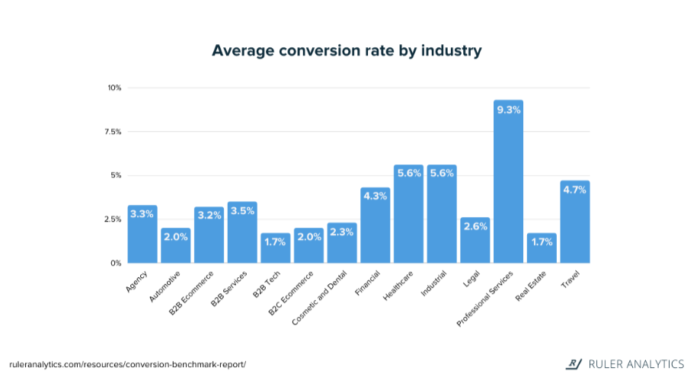Lead generation metrics and KPIs play a crucial role in understanding how your marketing campaigns perform.
If your business is struggling to generate quality leads, it’s not just you. Many companies are struggling with high lead costs and low conversion rates. As your company grows, it can be challenging to keep track of all the different metrics to determine how well you’re doing. Lead generation metrics and KPIs help you evaluate the effectiveness of your marketing efforts and tell you which strategies are working and which need improvement.
The big question that marketers have is: Are you using the right metrics for your lead generation campaigns?
This blog lists the metrics and KPIs that matter the most. For creating steady lead flow, it is crucial to understand the metrics that could help you get a clearer picture of where your business is best and what needs work.
Importance of Lead Generation Metrics & KPIs
Be it to understand how your digital marketing landing page is performing or how well your eCommerce website is receiving traction, every business needs to generate leads. It doesn’t matter if you have an offline or online business; without leads, you can’t expect to make sales. That’s why it’s essential to measure your lead generation efforts. Investing in the right resources and communication channels helps acquire leads at a lower cost. It proves that a promotional campaign is efficient and effective.
By regularly recording a set of lead generation metrics and KPIs for your business, you can:
- Determine the ROI from your marketing efforts
- Measure the effectiveness of your lead generation campaigns
- See which strategies work best
- Evaluate traffic sources
- Monitor new leads
But every business is different, and there are a lot of KPIs and metrics you can use to measure the success of a marketing program. But, all of this can become hectic. That’s why you need to select an array of metrics and KPIs that align with your business goals and serve to measure your achievements and setbacks in an organised manner.
For creating a set of lead generation metrics and KPIs that mainly cater to your marketing needs, here are the two things you need to keep in mind.
Buyers’ Persona
Advertising varies from channel to channel. As marketers, we should know the channels our target audience regularly uses to engage them effectively. Create and analyse your buyers’ persona to filter out what metrics will be the most efficient to measure your chances of securing and converting a lead. For example, if you open up an eCommerce store, Facebook will be a great option to advertise. Your metrics can be the number of ads clicks, conversions, etc.
Business Model
Whether you are a D2C, B2C, or B2B company, your marketing strategies will vary accordingly. For example, most B2C businesses mainly focus on outbound marketing. In contrast, the while B2B marketing ecosystem is inbound. It leads to variation in budgets, targeted channels, and overall company goals. According to research, conversion rates differ from industry to industry. It means your company’s benchmarks should also depend on its operating sector.

5 Crucial Lead Generation Metrics and KPIs
Many different metrics can get tracked to help you gauge your marketing performance, some of which we have discussed below.
1. Website Traffic
The first thing to evaluate is the number of people visiting your website. It includes both your organic and paid traffic. The number of people who visit your site should be steadily rising or consistent. You’ll also want to see a steady increase in the number of visitors to your site from month to month. Marketers use tools like Google Analytics to track website metrics like:
– Bounce rate
The bounce rate is a metric that measures how frequently users visit a page on your site and then leave without visiting any other pages. A high bounce rate indicates that the content on the site does not provide a good user experience. It points out that some changes need to be made to the design and content of the website. According to Semrush, an optimal bounce rate would be 26% to 40%.
A periodic table of content marketing can help you level up your website’s content. Check out the full blog: Learn About The Periodic Table of Content Marketing.
– CTR
The click-through rate measures the performance of your website’s CTA. In marketing campaigns, marketers put CTAs everywhere, like, ads, links, landing pages, footers, etc. It becomes crucial to measure how every CTA is performing. The formula for CTR is:

– Page Load Time
The average time for a page to load on your screen is called page load time. It’s computed from the beginning (when you click on a page link ) to the end (when the page gets fully loaded). The time gets usually measured in seconds. Google recommends keeping the page load time to 2 seconds or lower for lower consumer bounce rates.
2. Cost per Acquisition (CPA)
CPA is a great way to figure out how much you’re spending on acquiring new customers. It’s also a good indicator of your ROI because it shows the return on investment for each new customer. The formula for calculating CPA is:

A high cost per conversion may signify that you’re investing too much and not getting enough in return. Suppose you find that you have a high cost per acquisition. In that case, you should implement strategies to bring your costs down or try different marketing avenues like pay-per-click (PPC) advertising. It is a marketing channel that drives higher conversion rates than other marketing channels such as Facebook ads and display ads.
3. Customer Lifetime Value (CLV)
A significant metric marketers should consider when running lead generation campaigns is the customer lifetime value (CLV). It determines how much revenue a particular client will generate throughout their lifetime with your company. Knowing the CLV is vital to understanding how much to spend on marketing efforts, which channels are most effective, and what you should be focusing on. It gets calculated with the help of a formula, which is:

CLV depends on various factors like customer retention, lead nurturing campaigns, the scope of upselling and cross-selling, etc. Customer lifetime value helps you optimise your marketing strategy so that it doesn’t generate too many clicks without enough conversions. Suppose you notice that most of the promotional campaigns generated end up with no leads or low-quality leads. In that case, you may need to research your target audience.
4. Cost per lead (CPL)
You want to know how much you’re paying for a lead and how likely it will convert into customers. The cost per lead will tell you how far your marketing dollars are going and if that investment is paying off.
CPL helps you understand whether you invest in the right tools and channels to generate quality leads. Suppose you find that your costs per lead increase even though your leads are converting at a greater rate than the industry average. In that case, it may mean that there’s room for improvement in the way you’re reaching prospective buyers or targeting them with relevant advertising messages. The formula for calculating CPL is:

5. Lead Conversion Rate
The lead conversion rate is the percentage of potential prospects converting into quality leads. It is an important metric because it tells you how much money you’re spending to generate leads and how many leads are converting into customers. Marketers calculate lead conversion rates with the formula:

You spend $1,000 on a marketing campaign that generates 100 leads. You could divide $1,000 by 100 and get a lead conversion rate of 10%. That means for every $10 you spend on marketing; only one lead will convert into a customer. It is not an adequate ratio, so you’ll want to do some more analysis to determine why your lead conversion rates are so low.
Conclusion
When you know the critical lead generation metrics and KPIs crucial for your business, you are one step closer to having a successful strategy. Marketers need to understand that instead of measuring all types of metrics and KPIs, they should focus on the ones relevant to their sector of work.
If your PPC ads are not performing well, you need a new landing page. Creating a landing page with a reasonable conversion rate can take a lot of time. That’s why at 99Landing Pages, we have the perfect lead generation landing page templates that help you get started quickly. Check out our inventory here: 99Landing Pages to know more.
If you don’t know what to do after buying a lead generation landing page template, then check out this blog: What To Do After Buying A Lead Generation Landing page Template





